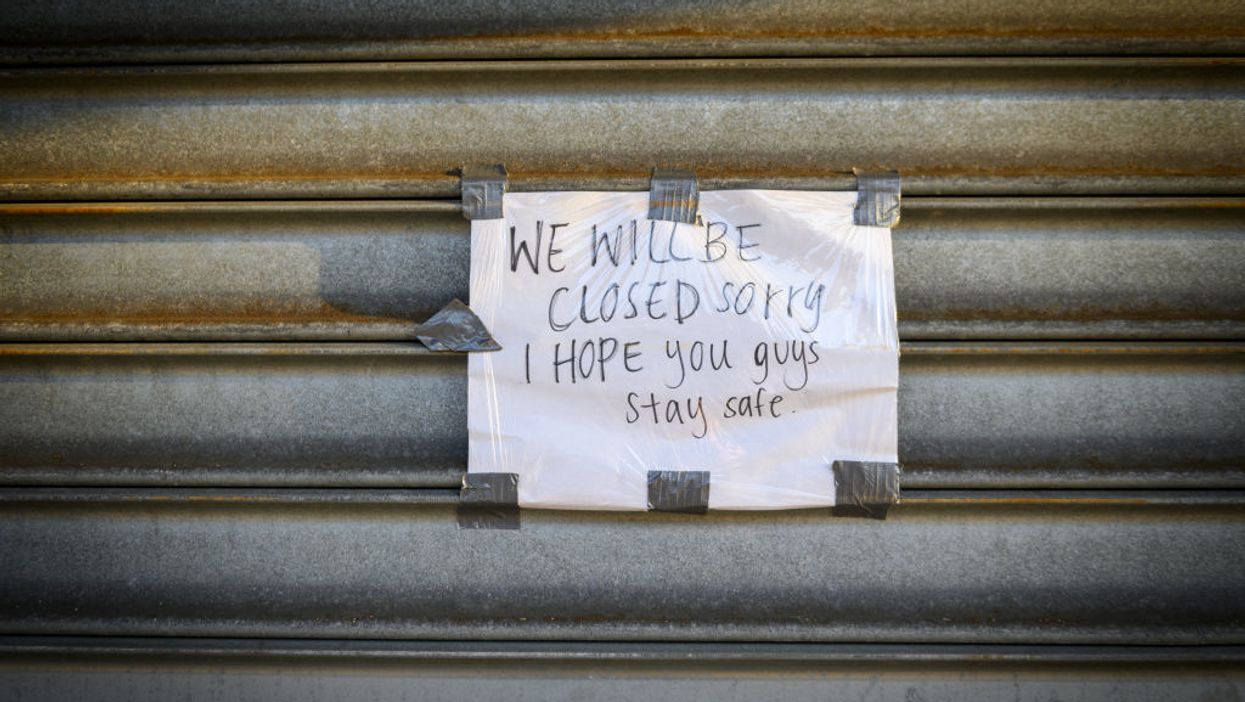
Christopher Occhicone/Bloomberg via Getty Images

New data shows those states have had their death toll projections revised downward
Several states who have refused to completely shut down amid the coronavirus, despite mounting pressure from health experts and members of the media to do so, have seen their death toll projections revised downward in recent days.
The new information undermines the notion that a national shutdown is necessary to defeat the virus and supports a geographically flexible approach to social distancing and shutdown measures.
As of Wednesday (April 8), officials in eight remaining states have yet to issue full stay-at-home orders. Those states are Arkansas, Iowa, Nebraska, North Dakota, Oklahoma, South Dakota, Utah, and Wyoming. Officials in three other states — Alabama, Missouri, and South Carolina — only issued stay-at-home orders within the last few days after being resistant to enacting such a measure in the weeks prior.
Conventional wisdom would suggest that those states, due to their inaction, would reap the consequences in the form of higher COVID-19 death toll projections. But that has not been the case.
According to data from the Institute for Health Metrics and Evaluation, which tracks the coronavirus outbreak in each individual state, predicting its death toll and hospital resource usage, all but one of the states in question have downgraded their death toll projections.
On March 27, the the Institute for Health Metrics and Evaluation published a study detailing the projected death toll for all 50 states. Listed below are charts showing the March 27 projections alongside the revised projections from Wednesday.
All of the states have had their death toll projections lowered, except one: North Dakota. But it was not immediately obvious as to why North Dakota had its projection raised. As of Wednesday, the state has only reported four deaths as a result of COVID-19.
TheBlaze reached out to IHME for comment about this, but the institute did not respond in time for publication.
In addition to downgraded death toll projections, the states also saw significant downgrades for their projected hospital resource use, which include intensive care unit beds and ventilators.
Data from the March 27 IHME release assumes full social distancing by the states, which is described by the institute as implementation of three out of the following four measures: school closures, closing nonessential services, shelter-in-place, and major travel restrictions.
Since major travel restrictions have not been implemented by any states, that means that none of the states surveyed above have practiced full social distancing as outlined by the IHME model. Thus, full social distancing was not required in order for those states to have their projections revised downward.
It's important, however, to note what the information is and is not suggesting.
First, it is not suggesting in any way that social distancing measures are fruitless in fighting the coronavirus pandemic. All Americans are presumably adhering to President Trump's social distancing guidelines to avoid large groups and stay home if feeling ill. That, by all accounts, seems to be working.
But secondly, what the data is suggesting is that lesser-hit states in which officials have opted not to issue stay-at-home orders have not been negatively affected by that decision in a noticeable way.
The states have been excoriated by national health experts and the mainstream media for refusing to issue stay-at-home orders.
Last week, CNN's Anderson Cooper pushed for a nationwide shutdown on-air. When asked if he shared the sentiment, leading U.S. infectious disease expert Dr. Anthony Fauci responded in agreement, saying, "I don't understand why that's not happening."
In a White House press briefing around the same time, task force coordinator Dr. Deborah Birx stated: "We're only as strong as every community, every county, every state, every American following the guidelines to a T, and I can tell by the curve, and as it is today, that not every American is following it."
CNN analyst Joe Lockhart, pointing to the fact that many of the states that have not issued stay-at-home orders are run by Republican governors, argued that "it now is literally true [that] the Republican Party is putting all of us at risk."
The data doesn't suggest that social distancing as a whole is worthless, or that it isn't having any effect. But it does raise the question of whether every single state and locality needs to institute the same exact stay-at-home-on-government-orders regime. Many commentators have suggested that such measures might well be necessary in some places, but not necessary in others. The fact that both hospital usage and fatality projections are going down even in states without stay-at-home orders indicates that these people might be right.
The president has also repeatedly maintained that a national shutdown is not the best option, even as he has opted to extend his social distancing guidelines through the month of April.
"States are different," the president said during a White House press briefing last week. "There are some states that are different, there are some states that don't have much of a problem."
"So you have to give a little bit of flexibility," he continued. "We have a state in the Midwest, or if Alaska, as an example, doesn't have a problem, it's awfully tough to say, 'close it down.'"